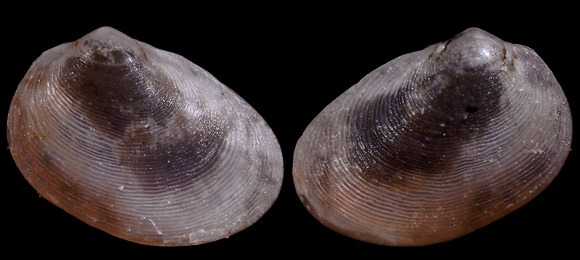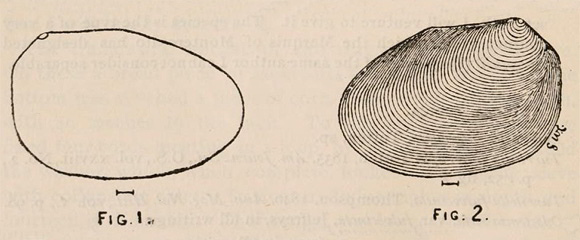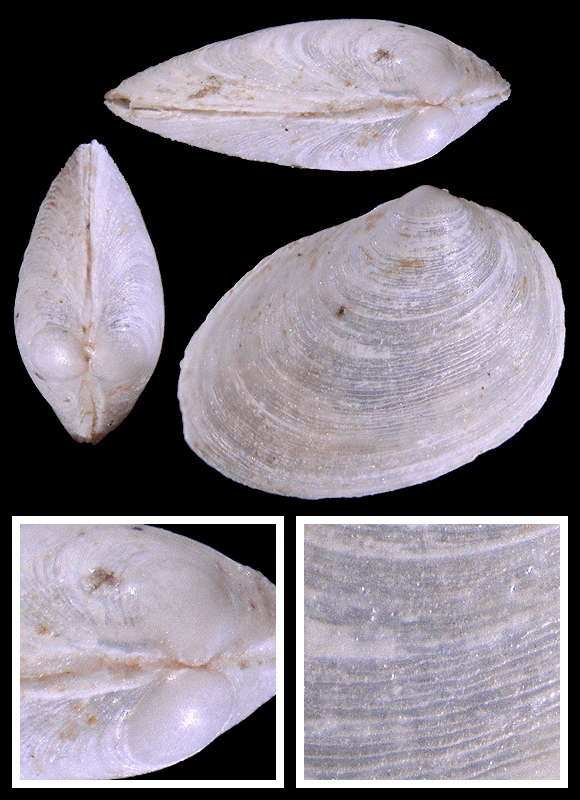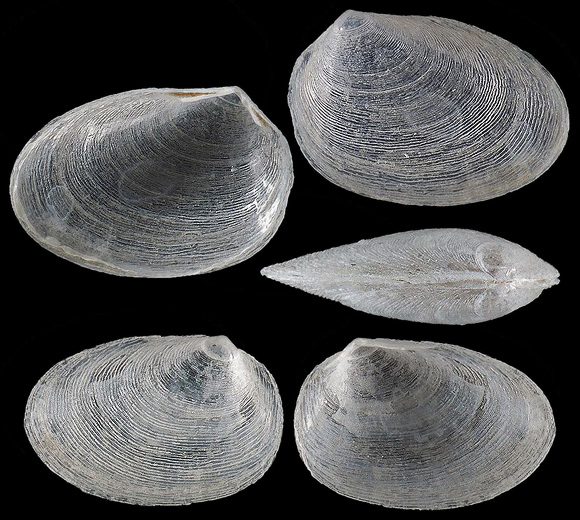
Original taxon: Neoleptum obliquatum.
Lives on soft bottoms from lower infralittoral down to 100m deep. Rare in the north.
22m deep, off Cesenatico, Emilia-Romagna, Italy. 1,5mm.
« Shell relatively flattened, equivalve, strongly inequilateral, beaks in the posterior two-thirds of the shell. Umbos prominent, rounded. Outline obliquely subovate, transversely tear-drop in form. Dorsal-anterior (lunule) margin prominent, straight, gently sloping, slightly angled at junction with anterior margin; lunule elongate, narrow, not sunken but defined by a weak ridge. Anterior margin rounded; ventral margin gently curved; posterior margin subtruncate, junctions with ventral and posterior dorsal margins weakly angulate; posterior dorsal margin short, straight to slightly convex, steeply angled. Ligament large, internal, on a shallow resilifer, slightly posterior to the beaks. Hinge in right valve with single anterior and posterior lateral teeth; anterior lateral longer than posterior […], parallel and equal to the length of the lunule margin, which creates a shelf to form a socket; posterior lateral short subparallel to dorsal margin and forming a small v-shaped socket at its posterior extremity. Left valve without lateral teeth but dorsal margins slightly extended as marginal flanges that fit into right valve sockets. A small tubercle is present beneath and slightly to the anterior of the beak. The prodissoconch is smooth, bearing no sculpture… » – Holmes, Gallichan & Wood, 2006: “Coracuta obliquata n. gen. (Chaster, 1897) (Bivalvia: Montacutidae) - First British record for 100 years.” Journal of Conchology. 39. 151-158.

« Sculpture of fine, sharp, concentric ridges, these irregulary undulating and occasionally dichotomizing. Shell colour cream to very light brown, glossy. » – Ibid.
Above: G. W. Chaster: Neolepton obliquatum – “Notes on the Marine Mollusca of Rathlin Island”, The Irish Naturalist tome 6, Dublin 1897, via BHL.
« As the species has never been figured, I give a sketch of one shell (Fig. 2) and an outline of another of slightly different contour (Fig. 1). It will be found quite unlike any other British form. The outer surface is covered with fine and close-set concentric striae, which are however so strong as to give the shell a rough appearance. » – The prodissoconch was not detected by the author, who did not include it in the drawing.


– (CC BY-NC-SA) –